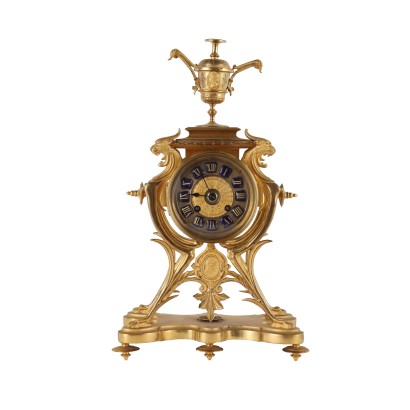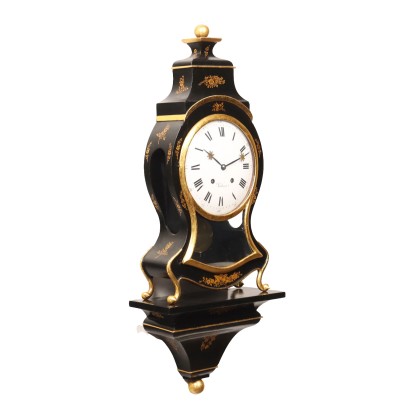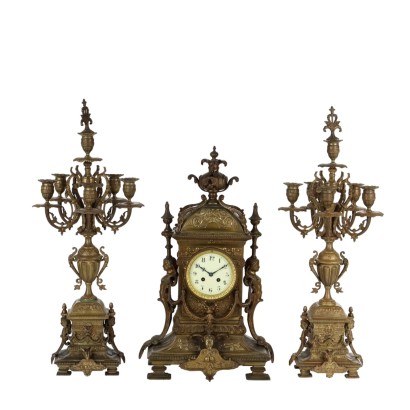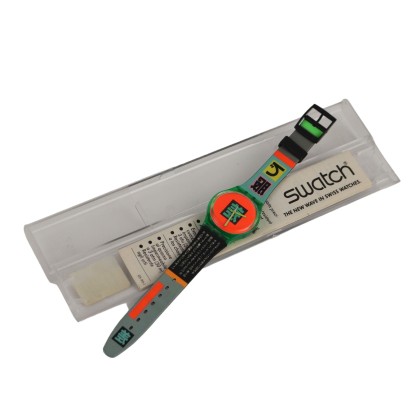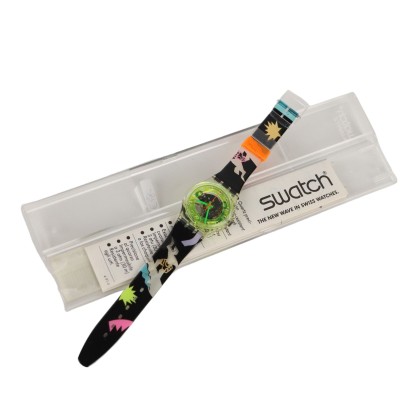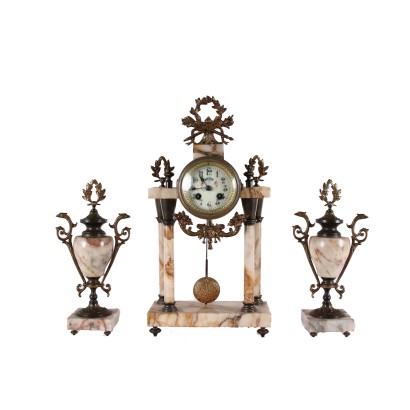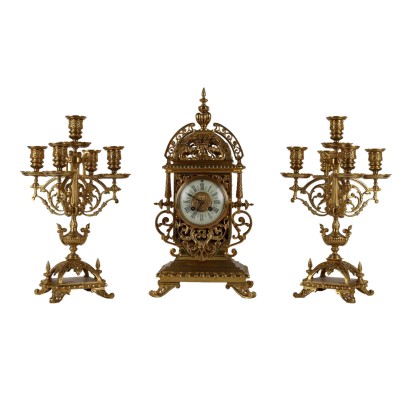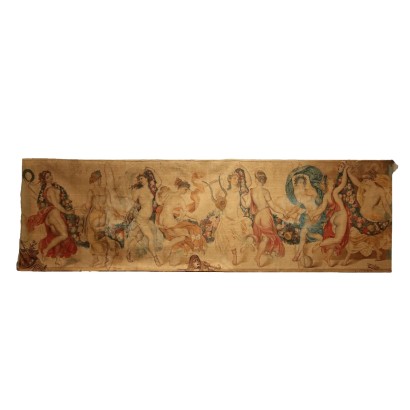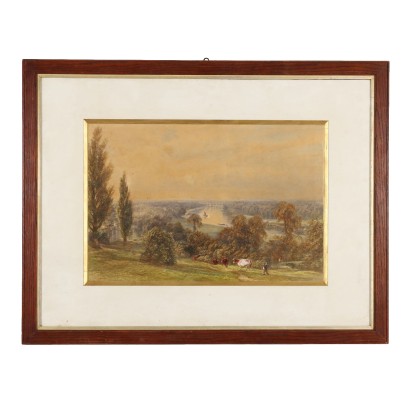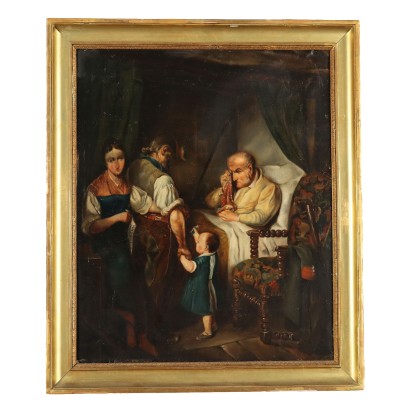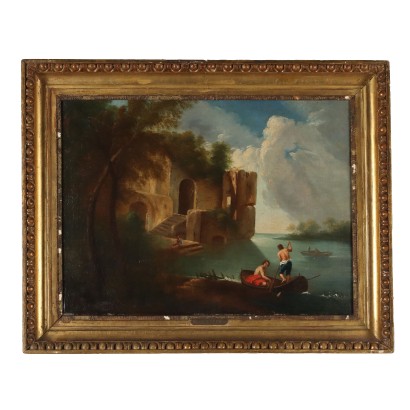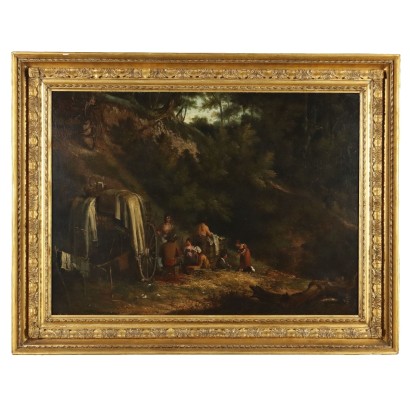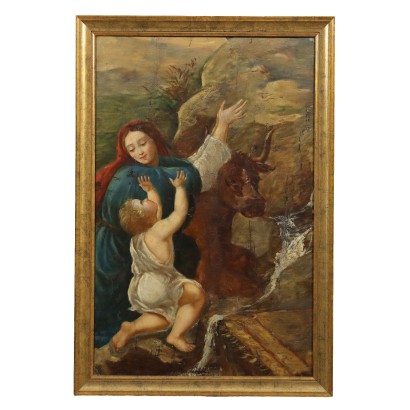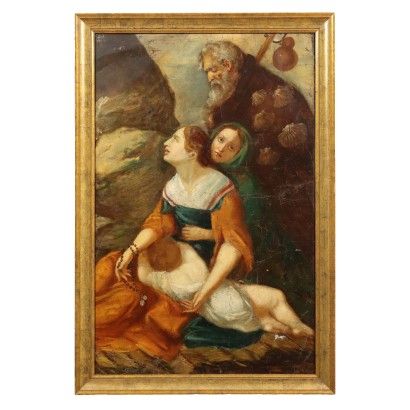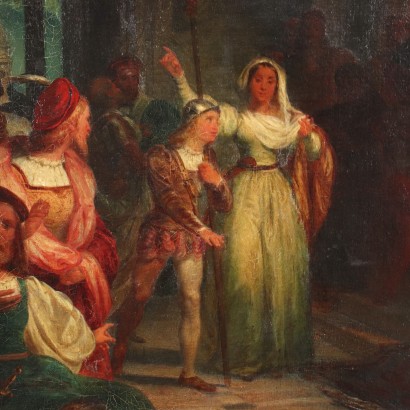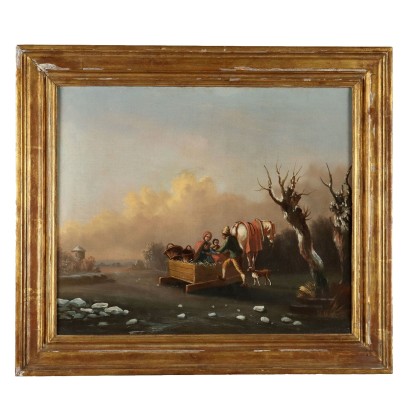Henry Dasson Clock Gilded Bronze France 19th Century
Features
Age: 19th Century / 1801 - 1900
Origin: Parigi, France
Material: Gilded Bronze
Description
Gilded bronze clock with polylobate base decorated with leafy and cyma mouldings patterns. 4 scrolls joined together with a central element embellished with frames and a garland support the clock case finelly chiselled and decorated with leafy pattern. On top of the case there are two flirting doves posed on rocks. The vise with H.ry Dasson signature has roman numbers for hours and arabic numbers for minutes scanned five by five; richly decorated hands. " Henry Dasson 1885" written on the base.
Product Condition:
Fair condition. Wear consistent with age and use.
Dimensions (cm):
Height: 32
Width: 18,5
Depth: 16
Certificate issued by: Enrico Sala, expert
Additional Information
Notes historical bibliographic
Henry Dasson (Paris 1825-1896), was one of the leading Parisian bronzers of the nineteenth century, whose works are recognized for their decorative refinement and for the high quality of their bronze casting. After having a brief career in the manufacture of bronze artifacts and watches in association with the skilled designer Emile Godeau, Dasson studied with Justin Marie Lequien, a professor at the École Superieur Turgot. In 1871 he acquired the thriving business of cabinetmaker CharlesGuillaume Winckelsen, soon becoming a recognized and appreciated cabinetmaker and bronze maker himself. Specializing above all in the production of Louis XIV, XV and XVI style furniture and objects, his production was highly sought after and qualitatively appreciated to the point of allowing him to participate in the Parisian Exposition Universelle of 1878 and 1889, where the latter was awarded the Grand Prix Artistique. Awarded the title of Chevalier de la Légion d'honneur in 1883, Dasson ceased production of his manufacture in 1894, selling his models and designs at a massive auction held the same year. Dasson's production was very diversified both in the type of works (furniture such as tables, but also chandeliers, candelabra and clocks) and in the materials and techniques used: although his favorite was certainly the bronze casting, often in his articles there are also precious marbles. The table clock in question, signed both on the display and on the base, where it also bears the date 1885, is a piece of which there are other similar examples, such as one recently auctioned, the same as ours except for the base, absent in this case. Comparisons are also possible with his production of watches, in particular with an example recently passed on the antiques market, signed on the exhibition “HENRY DASSON / A PARIS”, and with which it is possible to notice some connections with the structure of the clock. Although the decoration is different, denoting a greater rocaille influence, the choice of crowning the clock with an all-round sculpture is also similar, although in this case it is a small putto holding an arrow in his hand. The pair of animals of ours constitutes, in fact, a real all-round sculpture, and demonstrates the skill in casting and burin chiselling of the bronze worker, able to render the plumage and legs of the birds in a meticulous and detailed way. .Age: 19th Century / 1801 - 1900
19th Century / 1801 - 1900Material: Gilded Bronze
Other customers have searched:
Orologi, orologio dorato, orologio da camino, orologio da appoggio, orologio da tavolo, trittico, pendola, parigina..
Vuoi conoscere di più sugli orologi? Consulta i nostri articoli del blog e di FineArt che ne parlano:
Leggi di più
Le lancette degli orologi ci insegnano cos'è il traforo
Cartel Barat a Paris Orologio in bronzo dorato
Orologio Phippard Japanned Longcase, secondo quarto XVIII secolo Orologio a torre
Trittico con orologio e coppia di candelabri, Etienne Lenoir – Henry Dasson, Francia, seconda metà XIX secolo
Orologio Impero da appoggio
Orologio “Carro di Telemaco”
Orologio da mensola, Camillo Borghese, Torino, 1808 – 1814
Orologio a Vaso, Francia, Primo Quarto XIX Secolo
Orologio Impero a pendolo “Pegaso e Perseo” Lesieur à Paris, 1815 ca.
Leggi di più
Le lancette degli orologi ci insegnano cos'è il traforoCartel Barat a Paris Orologio in bronzo dorato
Orologio Phippard Japanned Longcase, secondo quarto XVIII secolo Orologio a torre
Trittico con orologio e coppia di candelabri, Etienne Lenoir – Henry Dasson, Francia, seconda metà XIX secolo
Orologio Impero da appoggio
Orologio “Carro di Telemaco”
Orologio da mensola, Camillo Borghese, Torino, 1808 – 1814
Orologio a Vaso, Francia, Primo Quarto XIX Secolo
Orologio Impero a pendolo “Pegaso e Perseo” Lesieur à Paris, 1815 ca.









